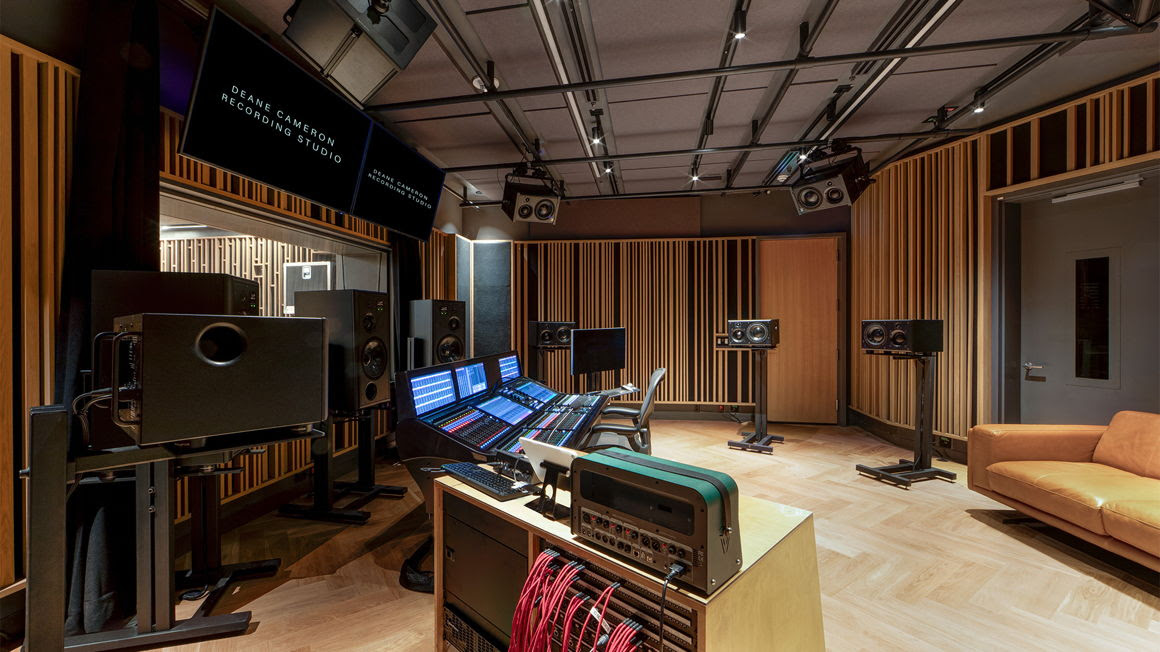Concert and lecture venue Massey Hall in Toronto recently completed a large-scale revitalization project that includes the construction of the adjoining seven-story Allied Music Centre that houses performance and production spaces for the historic 129-year-old hall, including the Deane Cameron Recording Studio, which opened in September 2023 and is equipped with a Solid State Logic System T S500 64-fader console.
The new building expands Massey Hall’s talent support services, offering rehearsal rooms, artist dressing rooms, and other amenities. Public spaces include a lobby, lounge, and new performance venues that include the 500-capacity TD Music Hall on the fourth floor and the 100-seat 6th Floor Theatre.
“My role was to oversee all technical aspects of the entire project and to connect all of these spaces so that we could record audio and video in a high-quality way from anywhere at any time,” says Doug McKendrick, vice president, Production & Technology at The Corporation of Massey Hall and Roy Thomson Hall, the not-for-profit charitable organization that operates the concert halls.
McKendrick and his staff had a short list of requirements for the mixing console to be installed in the main control room of the new seventh-floor studio complex, which is named in honor of Massey Hall’s late CEO, Deane Cameron. Primarily, the console needed to accommodate events in Massey Hall as well as switch between live shows in the Allied Music Centre’s various venues and studio recording projects in the new production facility. “We needed it to be a digital console and we needed to be able to recall fast,” he says.
Veteran producer and engineer Eddie Kramer (Jimi Hendrix, David Bowie, The Rolling Stones, Led Zeppelin) who lives in the Toronto area, consulted on the studio project and recommended the SSL System T production platform, McKendrick adds. “Eddie has been a real friend of the project and a real mentor to me.”
“System T is so clever, so slick and so flexible — and it does sound bloody marvelous,” Kramer adds. The new console is also easy to learn and operate, he says: “It has a certain logic that anybody who has sat behind a console will get fairly quickly.”
Kramer became involved in the project while the studio was still being designed, he recalls, and pushed for the control room to be as large as possible. “I said, ‘You have to have Dolby Atmos, and if you’re going to do Dolby Atmos, you can’t have a small room.’ It was a joy working with Doug and the team. My hat’s off to the whole tech team; they did a terrific job.”
McKendrick and the team wanted to be able to work in Dolby Atmos on both recording and live projects in the new studio, which is outfitted with a 9.1.4 ATC monitoring system. “We’re looking to push the envelope in audio as much as we can in all facets,” he says. “System T was the best choice. The console is really a great, great device.”
Shows at Massey Hall have generated a variety of live albums over the years, including a legendary 1953 Charlie Parker-Dizzy Gillespie concert, a 1971 performance by Neil Young, Rush’s 1976 gig, captured on All the World’s a Stage, and Ronnie Hawkins’ 60th birthday celebration concert in 1995. Bringing concert recording capabilities into the modern era, Allied Music Centre is wired with fiber, McKendrick says, with a 10-gig backbone extending throughout the entire facility and into Massey Hall. To record an event in Massey Hall, for example, staff move the 96-channel remote preamp system, which includes a selection of SSL’s Network I/O interfaces, to the stage. “They plug in, we carry Dante up to the System T and away we go,” he says.
For live shows, engineers have been utilizing System T’s snapshot capabilities, McKendrick adds. One of the first events mixed through the System T was the Polaris Music Prize awards gala in September, which included performances from seven of the nominees. “The snapshots are intuitive so we’re not finding that there’s a giant learning curve for people coming in and using the console. In fact, we’ve been giving people an afternoon orientation on it and the next day they’re in here mixing 90 or 100 tracks, live.”
On the studio side, he continues, “The way that we’ve got snapshots set up to switch back and forth between playback and recording is the fastest that I’ve seen on any console. So we’re able to work very, very effectively with the System T.”
The Deane Cameron Recording Studio’s main control room has a live space that doubles as a classroom and offers an iso booth. There are also some small writing rooms. “We’re a not-for-profit corporation and we help develop Canadian talent,” McKendrick says. “That extends to engineers and producers. We want to put real tools at their disposal. That includes Atmos — it’s a new thing to a lot of people, so we’re providing local engineers with an opportunity to come and try it.”
Toronto-based Martin van Dijk, senior consultant, partner and head of design at Engineering Harmonics; acoustician Bob Essert, founding director of Sound Space Vision in the U.K.; and networking specialist Jamie Howieson, co-founder and CEO Network Vectors in Australia, all brought their expertise to the Massey Hall revitalization and Allied Music Centre design and integration projects, McKendrick reports. Audio equipment suppliers included Solotech, Studio Economik and Long & McQuade Professional.




















